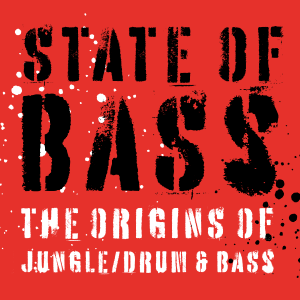Whenever I listen to any of the compilation CDs that came out in the mid-90s, they still sound fresh. Discs like Jumpin & Pumpin’s Jungle Tekno 5 and the first Total Science volume aren’t as sought after as classic records and original Dubplates from the period. But something about the artwork, the clear Jewel CD cases and the frenzied, forward-thinking tracks you can find on these compilations takes me back to the excitement of Jungle Drum and Bass’s formative days. To me, even early Jungle Drum and Bass sounds like these still sound like the future, and they probably always will.
Museums aren’t usually the first spaces that ravers think of when talking about Jungle Drum & Bass, or any form of dance music for that matter. It seems odd even mentioning the two in the same sentence. But on the 23rd of March All Crews arrived at The Museum of Youth Culture to talk all things Jungle Drum & Bass, and the Museum of Youth Culture is no normal museum…
Far from a collection of fusty cupboards, the Museum of Youth Culture is a project dedicated to tracking the fashions, music and culture of young people past and present. The artefacts, records and artwork that they display are always adapting, growing and changing in order to record the key moments, movements and musical styles that shaped generations of young people growing up in Britain. As soon as I heard about the project, I hopped on the train to check it out.
The way the museum is set up is far from conventional as well. The same DIY spirit that formed Jungle and so many other youth music subcultures is still present in how the museum moves and adapts to fill whichever space it can. Originally based in Canada Water’s Printworks venue before relocating to Shaftesbury road and then having to close doors and re-open as a pop-up on Beak street. The project is a truly independent hustle, and the Museum is determined to do whatever is necessary to carry on their valuable work.
Throughout the 90s, 00s and up to the present, Jungle Drum and Bass has significantly shaped the lives, identities, relationships and weekends of young people in Britain. It was only inevitable then, that the museum would want to delve into Jungle Drum and Bass culture at some point.. and that’s where All Crews came correct!
As well as being one of All Crews’ own sharpshooters behind the lens, Tristan O’Neill is one of the UK’s most well-respected early rave photographers. In order to document what dancers were wearing and how they were moving, the museum has been digitizing Tristan’s entire archive. As media outlets all move toward online digital platforms, it can be easy for physical images and touchstones like these to be lost. I’m glad the museum has decided to digitally preserve Tristan’s snaps. They are invaluable visual records of how young Junglists and ravers used to express themselves at these events, and it would be a shame to lose them.
To celebrate the preservation of his work, the museum invited me and Tristan down to host an ‘in conversation with’ event in their basement space. We chatted about how Jungle sprung from Hardcore and transitioned from a sound and sub-genre of rave music, into its own distinct youth culture and movement.
If you’re interested in hearing our full, unedited discussion, you’ll have to follow the Museum on Instagram and keep your eyes peeled for the re-stream.
I cannot thank Jon and Lisa from the museum enough for giving us the chance to share our sub-culture’s origin stories, and give visitors of the museum an insight into growing up Junglist.
Our event was actually one of the last recorded at the museum’s Shaftesbury Avenue HQ before they had to relocate, so it’s now a piece of history in itself! The museum can currently be found in pop-up form on 35 Beak Street in Soho. If you ever get the chance to go down there I can’t recommend it enough.
Any donations made to the museum help them get one step closer to securing a permanent lease and finding a home for our nation’s youth history. If you’re interested in supporting the museum you can either donate directly here, or if you pop down to their 35 Beak Street you can buy all sorts of merch, including prints and postcards featuring some of Tristan’s photos that were used in All Crews.
The museum has also been involved with plenty of other projects about bass-focused youth music culture. Some of my favourites include their interviews with Dubstep blogger and chronicler Drumz of the South and also UK Hip-Hop head Normski’s write-up about how electronic music culture has influenced his life.
As for what I would put into the museum of youth culture well.. It would have to be one of the Jungle comp CDs that I mentioned earlier! While the exclusivity of Dubplate culture is intrinsic to Jungle Drum and Bass’s identity, for me these CDs are artefacts that embody how Jungle Drum and Bass wasn’t just a sound that DJs played, but a youth culture that thousands of young people were a part of. These CDs were accessible, cheap and easy to find in record stores and on the front of leading magazines like Knowledge. However, these compilations also showcased some of the most playful and progressive electronic music being assembled by the UK’s youth at the time.





